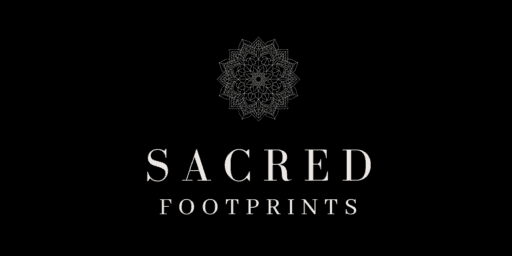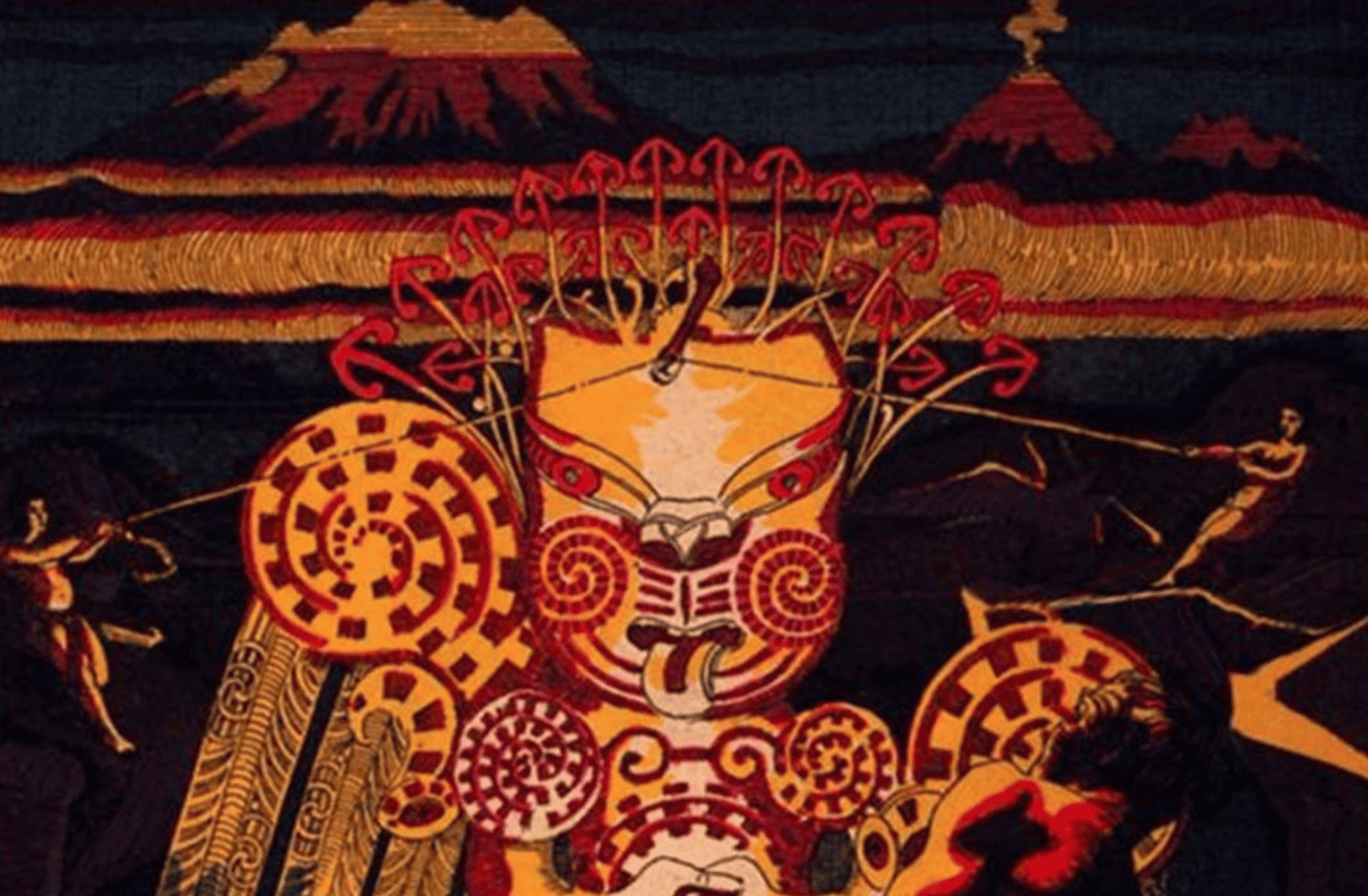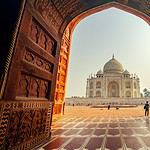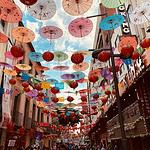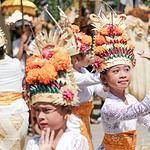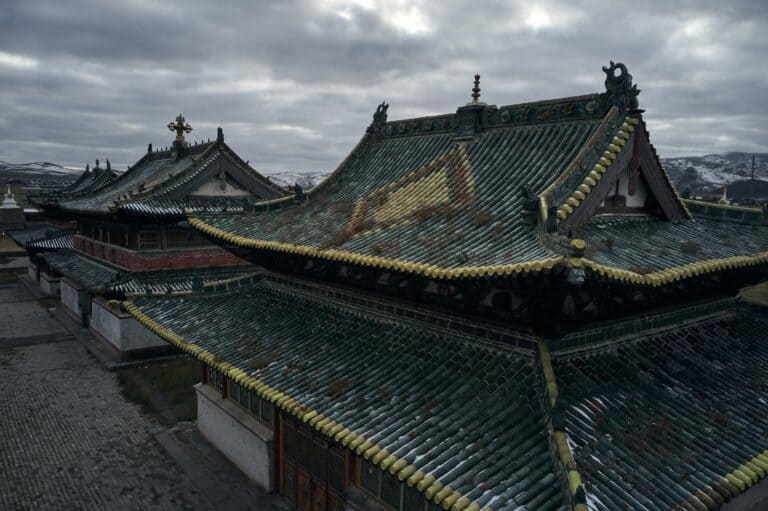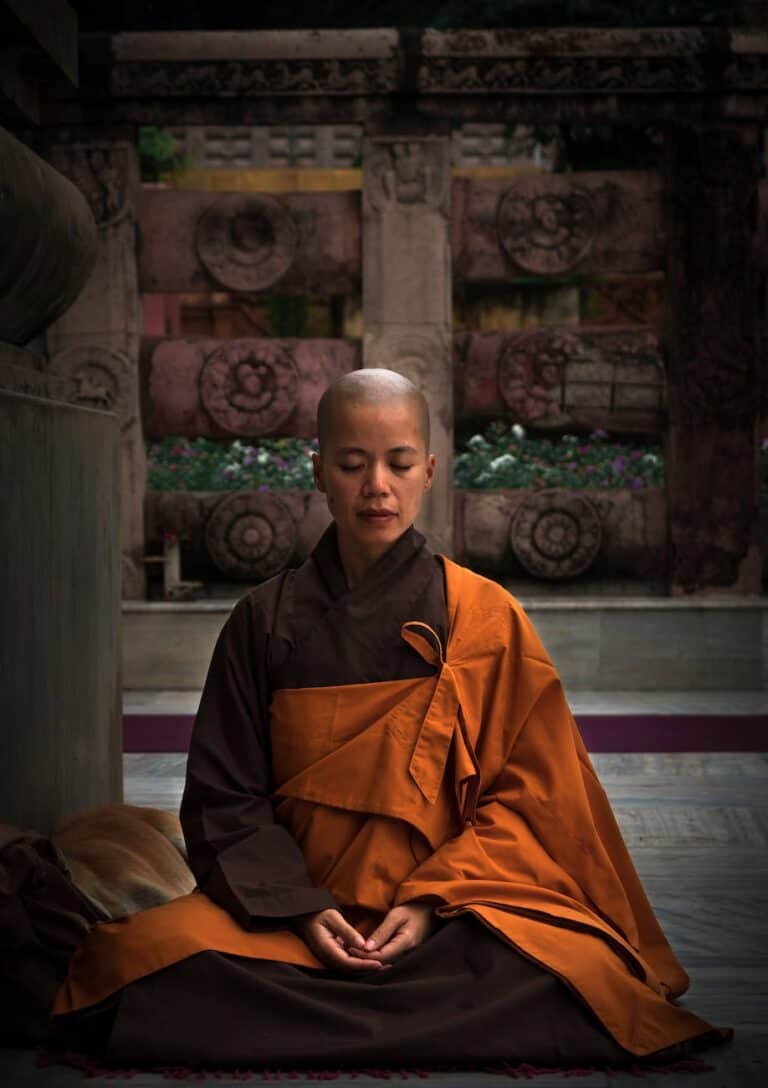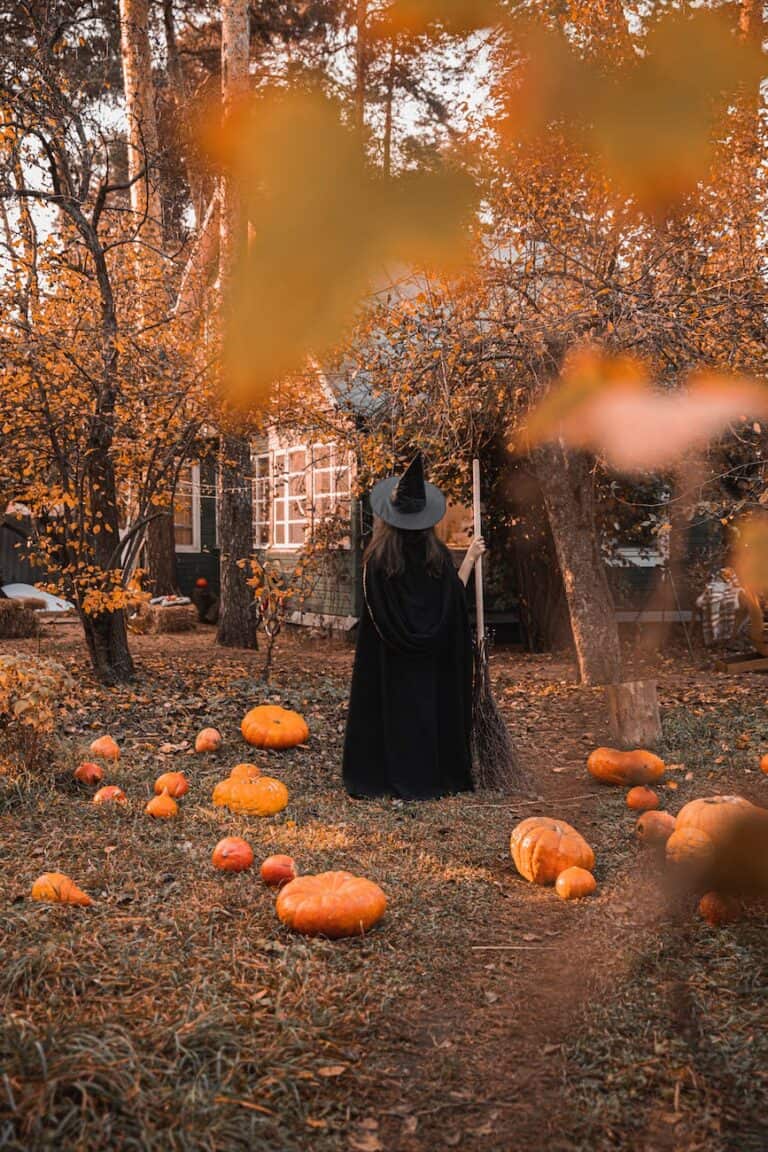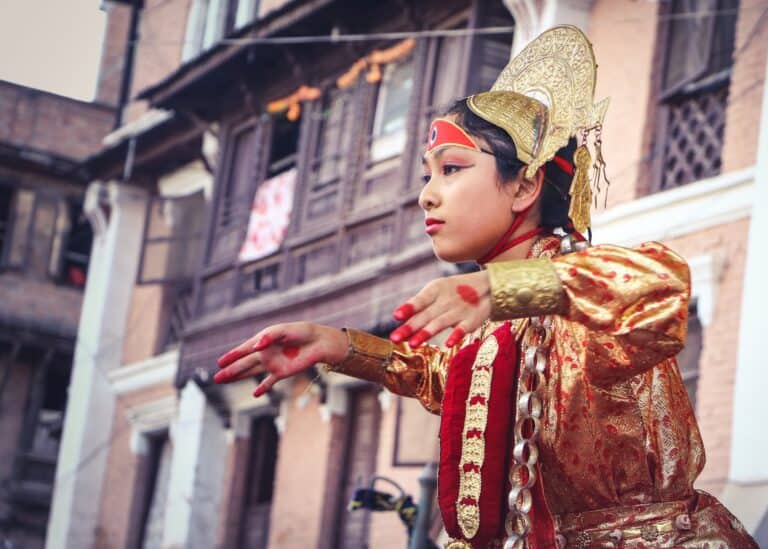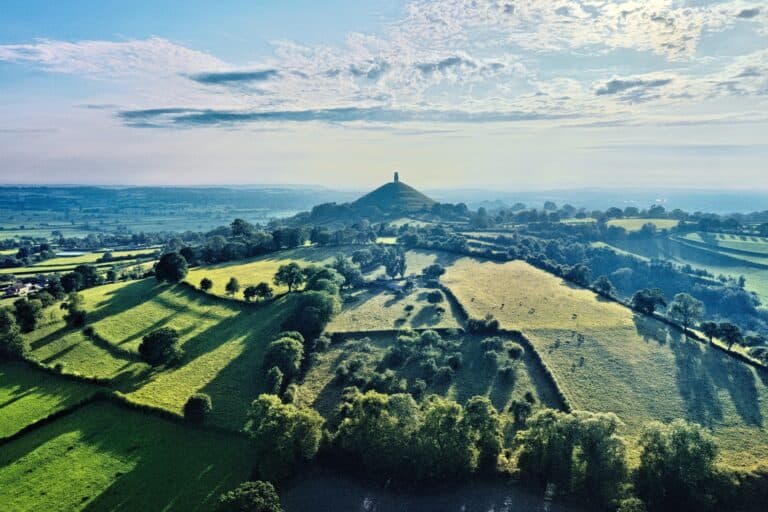Maui Mythology Unveiled: Legendary Lore of the Magic Valley Isle
Maui Mythology: Aloha to the heart of the Pacific. Where the tropical paradise of Maui unveils not just stunning landscapes but a captivating tapestry of mythology that breathes life into the very essence of the island.
Beyond its sun-kissed shores and emerald valleys, Maui is a realm where ancient stories of gods, demi-gods, and mystical creatures intertwine with the vibrant culture of its people.
Explore with us as we uncover the threads of Maui’s rich and sacred mythological fabric, connecting the past to the present in a symphony of nature, spirituality, and cultural legacy.
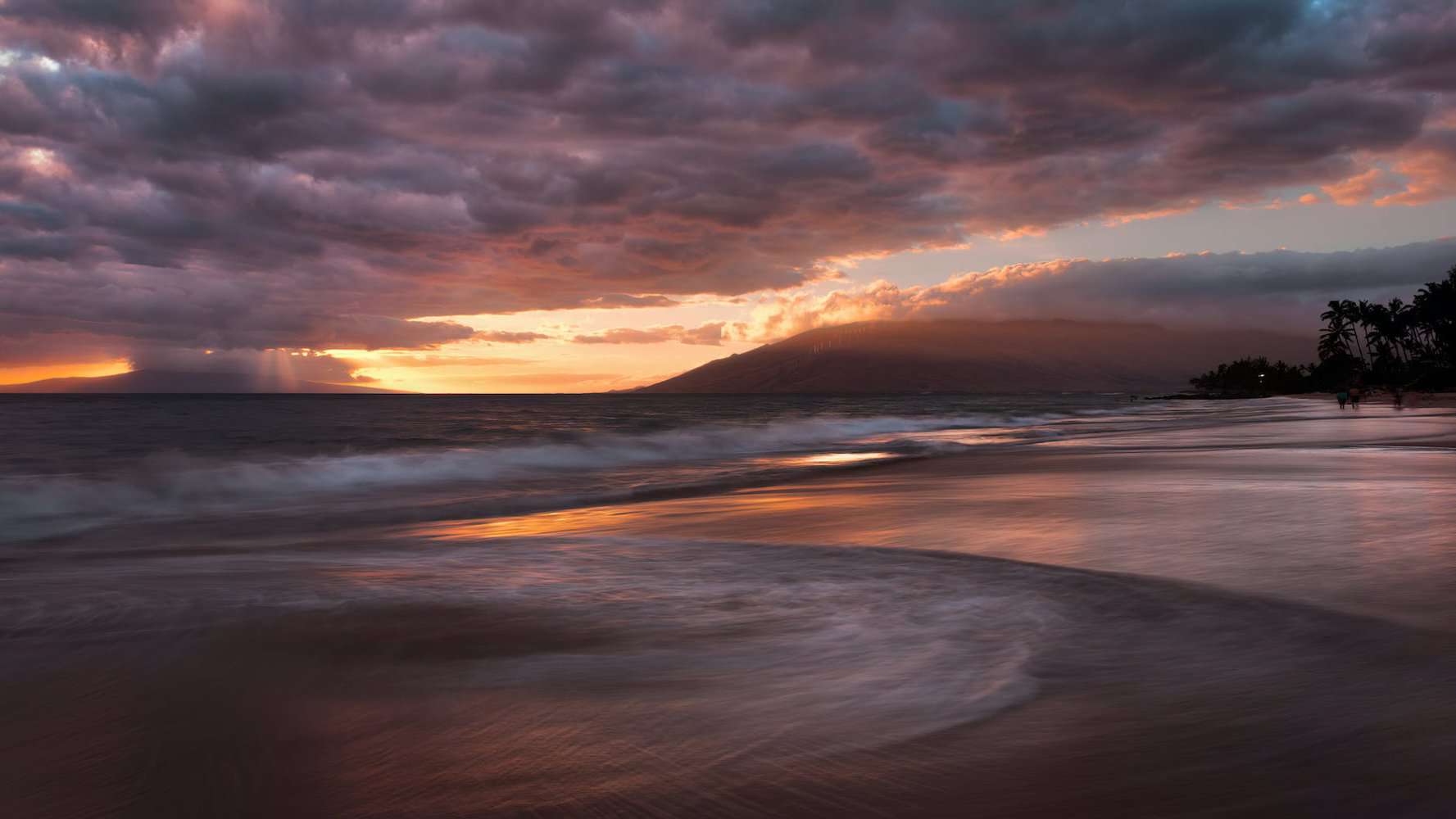
Table of Contents
Uncovering Maui Mythology: Meeting the Demi-Gods
What is A Demi-God?
In Hawaiian mythology, a demi-god is often called a “kupua” or “ʻaumākua.” Demi-gods are beings with both divine and mortal characteristics, born of a union between a god and a human.
The term “kupua” is broad and encompasses various supernatural beings with divine and human characteristics. These demi-gods may appear in different forms and play distinct roles in other myths.
Some stories feature other kupua who, like Maui, undertake remarkable adventures, possess extraordinary powers, or embody specific aspects of nature. The diversity of Hawaiian mythology means that multiple figures contribute to the rich tapestry of demi-gods, each with unique stories and attributes.
Maui, the Shape-Shifting Trickster:
Maui, the mischievous and charismatic demigod, takes centre stage in the enchanting mythology of Maui. Born of the union between the goddess Hina and the mortal chief Makea-Tutara, Maui’s divine lineage and extraordinary adventures have made him a legendary figure in Hawaiian folklore.
Renowned for his daring exploits and cunning tricks, Maui is a complex character whose stories unfold like a vibrant tapestry across the islands. He is often depicted with a fishhook which is supposed to be derived from the shape of cancellation scorpio.
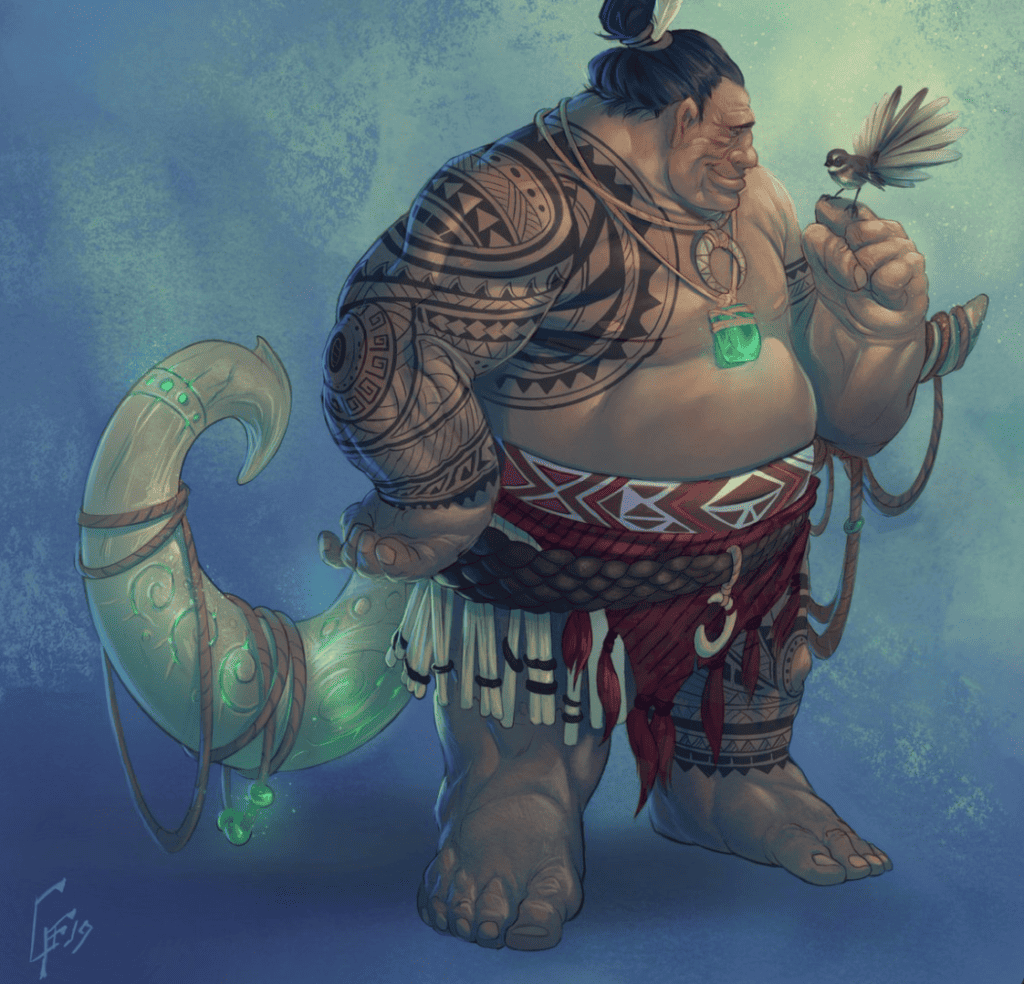
Maui and the Sky Father – “The Snaring of the Sky”:
One of Maui’s most celebrated feats is his endeavour to slow the sun. This tale captures the essence of his audacious nature. Using his grandmother’s jawbone as a magical fishhook, Maui embarked on a daring journey to the highest peak of Haleakalā, the House of the Sun. There, he ensnared the sun’s rays, compelling it to move more slowly across the sky, granting the people of Maui longer days and more sunlight.
Maui & the Creation of Paradisical Earth:
Maui’s legendary fishing expedition is another captivating narrative shaping the islands’ mythology. Armed with his enchanted fishhook, Maui cast his line into the ocean depths and, with great strength, pulled up the islands of Hawaii from the ocean floor.
Each island is said to be a testament to Maui’s extraordinary fishing prowess, and the story illustrates his pivotal role in creating and shaping the Hawaiian archipelago. Maui’s adventures, marked by wit and courage, intertwine with the natural wonders of the land, contributing to Maui’s enduring legacy in Hawaiian mythology.
Maui and the Lifting of the Sky – “A Selfless Act”:
In the Maui story of “Lifting the Sky,” the demigod embarks on a quest to alleviate humanity’s challenges. Recognizing the hardships caused by a low-hanging sky, Maui devises a plan to raise it higher. Enlisting the help of his brothers, Maui positions himself beneath the sky and, with supernatural strength, pushes it upward.
Despite the immense effort and resistance, Maui successfully lifts the sky, creating more space for life to thrive. This heroic act transforms the environment, allowing plants to flourish and making life more comfortable for humans. The tale “Lifting the Sky” reflects Maui’s selflessness and role as a cultural hero in Hawaiian mythology.
Maui and Hine-Nui-te-pō – “The Quest for Immortality”:
In one story version, Maui seeks to overcome death by entering the goddess Hine-nui-te-pō’s (the Great Woman of Night) domain. Maui attempts to crawl through her body while she sleeps to reverse the natural order of life and death. However, his efforts are foiled when a noisy bird wakes Hine-nui-te-pō, resulting in Maui’s untimely demise.
This tale explores themes of mortality, the boundaries between gods and humans, and the consequences of tampering with the natural order.
These additional stories contribute to the complexity of Maui’s character and the broader Hawaiian mythology, reflecting the people of Hawaii’s cultural values, natural environment, and spiritual beliefs.
Hina, the Moon Goddess:
Hina, the Moon Goddess, graces Hawaiian mythology with her luminous presence, casting a celestial glow over the spiritual landscape of Maui. Revered as a symbol of feminine energy and lunar cycles, Hina’s influence extends beyond her association with the moon, intertwining with the myths surrounding the demigod Maui.
As Maui’s mother, Hina plays a pivotal role in the legendary tales of his birth and early adventures, adding a divine mystique to the demigod’s lineage.
In Hawaiian mythology, Hina is not solely defined by her maternal role; she embodies various aspects, including creativity and renewal.
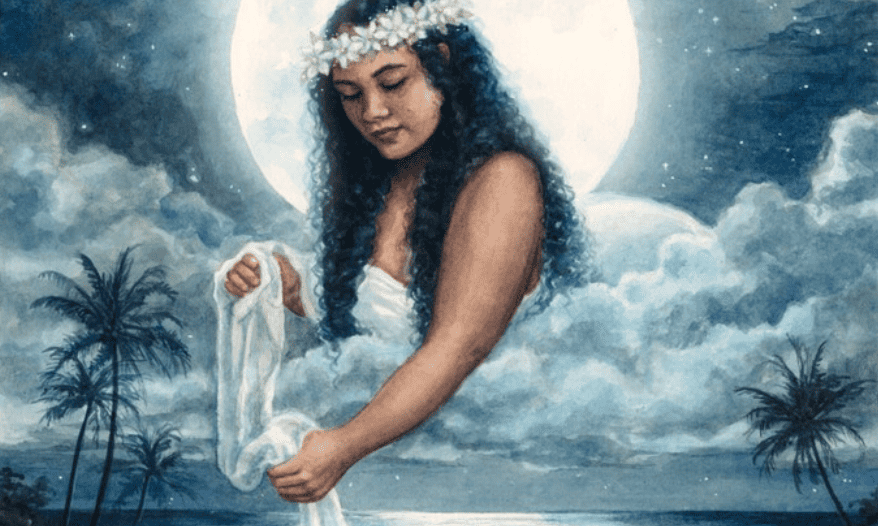
Often depicted as a skilled weaver crafting tapa cloth from the bark of the wauke plant, Hina’s creativity symbolizes the interconnectedness of life. Her connection to the moon also underscores her significance in guiding navigators through celestial phases, highlighting her role as a celestial guide for seafarers across the vast Pacific.
The spiritual significance of Hina extends to cultural practices and rituals that honour her presence. Celebrations and ceremonies dedicated to Hina contribute to the cultural heritage of the Hawaiian people, emphasizing themes of femininity, motherhood, and the cyclical nature of life.
Through Hina’s multifaceted character, the moon goddess weaves herself into the fabric of Maui’s mythology, casting her ethereal light on the islands’ natural and supernatural realms.
Pele, the Goddess of Fire:
Pele, the Goddess of Fire, stands as a formidable and captivating figure in Hawaiian mythology, making her presence felt in the tales and landscapes of Maui mythology.
Revered as the deity of volcanoes, Pele is often associated with the breathtaking volcanic activity on the islands, particularly the Big Island, where her fiery spirit is believed to dwell.
Born of the divine union between the Earth goddess Haumea and the sky god Kane Milohai, Pele’s story is one of cosmic origins and divine power.

The mythology surrounding Pele unfolds in dramatic narratives, with her fiery temperament shaping the volcanic landscapes of Hawaii. Legend has it that Pele, driven by an insatiable wanderlust, travelled across the Pacific in her fiery canoe, searching for a home.
Settling on the slopes of the mighty Haleakalā on Maui or in the caldera of Kīlauea on the Big Island, Pele’s presence is said to manifest in the molten lava flows and the smoky plumes that rise from the volcanic craters. Her restless spirit and unpredictable nature make her both a destructive and creative force, embodying the dualities inherent in the natural world.
In Maui mythology, Pele intersects with the tales of Maui himself. The stories of Maui slowing the sun and fishing up the islands are intricately linked with the volcanic landscapes shaped by Pele.
The battles between gods, such as those between Pele and the sea goddess Nāmakaokaha‘i, showcase the dynamic relationships within the Hawaiian pantheon. Thus, Pele’s fiery presence not only sculpts the physical terrain but also weaves into Maui’s spiritual and mythical fabric, creating a symbiotic relationship between the goddess of fire and the demigod of mischief.
Menehune, the Mystical Craftsmen:
The Menehune, mystical craftsmen of Hawaiian mythology, lend an air of enchantment to the cultural landscape of the islands. These legendary beings, often described as small in stature, are believed to reside in the hidden corners of Maui’s lush forests and secluded valleys.
Renowned for their exceptional craftsmanship, the Menehune are said to emerge under the moonlight, constructing intricate structures with astounding precision.
The stories surrounding the Menehune contribute to the rich tapestry of Hawaiian folklore. According to legend, these elusive beings work tirelessly at night, crafting fishponds, temples, and other remarkable structures.
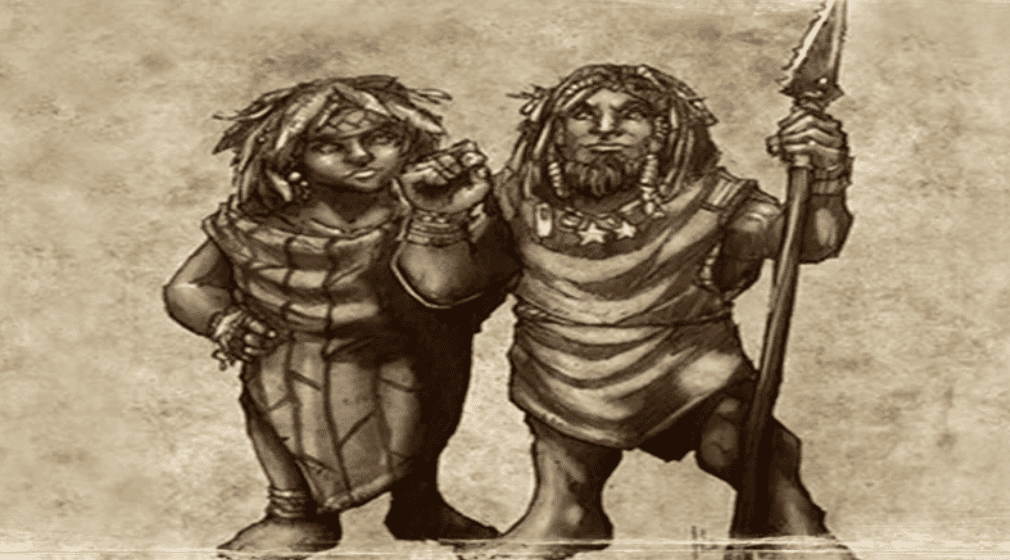
The Menehune’s industrious nature is celebrated, and their creations testify to their supernatural abilities. However, these mysterious craftsmen are elusive, disappearing before the break of dawn and leaving behind traces of their handiwork.
In the mythology of Maui, the presence of the Menehune adds a touch of magic to the island’s natural beauty. Their stories resonate with themes of craftsmanship, hidden realms, and the coexistence of the mystical with the everyday.
The enchanting tales of the Menehune underscore the belief in the unseen forces that shape the landscape, fostering a sense of wonder and reverence for the mystical dimensions of Hawaiian culture.
The Battle of the Nāmakaokaha’i and Pele:
The Battle of Nāmakaokaha’i and Pele unfolds as a dramatic and powerful narrative in Hawaiian mythology, adding layers of depth to the spiritual tapestry of the islands.
Nāmakaokaha’i, the sea goddess, and Pele, the fierce Goddess of Fire, engage in a cosmic clash that reverberates through the natural wonders of Maui and the surrounding archipelago.
Legend has it that the strife between Nāmakaokaha’i and Pele is rooted in a familial conflict, as Nāmakaokaha’i is Pele’s sister. The sea goddess, driven by intense emotions, pursues Pele in a tumultuous battle across the islands.
The volcanic landscapes and coastal features are believed to bear the scars of their celestial feud, with volcanic eruptions and ocean waves symbolizing the perpetual conflict between water and fire.
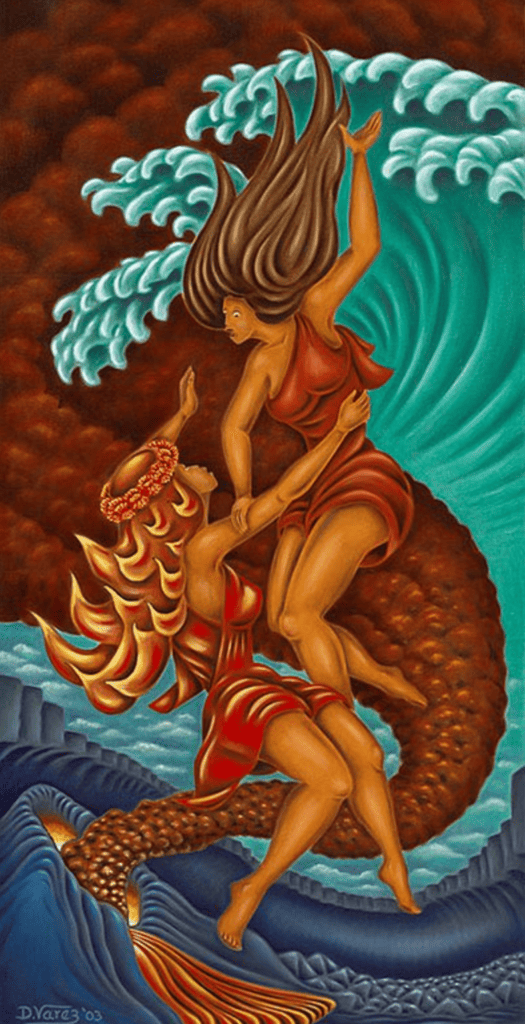
This epic battle not only personifies the elemental forces of nature but also underscores the intricate relationships within the Hawaiian pantheon. The mythic clash of Nāmakaokaha’i and Pele reminds us of the intertwined destinies of the gods and goddesses, shaping the very landforms and seascapes that define the beauty and drama of Maui.
The story illuminates the delicate balance between the realms of water and fire, forging a narrative that echoes through the ages, contributing to the profound mythology that captivates those who explore the mystical heart of Hawaii.
Maui Mythology FAQ:
Why is Maui mythology important to the people of Maui?
Maui mythology holds profound significance for the people of Maui as it serves as a cultural bedrock, providing a narrative framework for understanding their origins, the natural world, and the intricate relationships between gods, demigods, and humanity. These myths are not relegated to the past but are integral to the islanders’ cultural identity and daily life.
Is Maui mythology still relevant today? How is it honoured?
Maui mythology remains relevant, influencing various aspects of contemporary Maui life. Cultural practices, ceremonies, and festivals, such as hula performances, serve as living expressions of these myths. Additionally, rituals like blessings draw on the spiritual themes within the stories, underlining their ongoing importance in modern Maui society.
How do the people of Maui link their spiritual culture to the myths of Maui?
The myths of Maui are deeply intertwined with the spiritual culture of the island. They contribute to a broader Hawaiian spiritual worldview that emphasizes the interconnectedness of all living things, respect for nature, and balance. Spiritual practices, including blessings during significant life events, continue to draw inspiration from the enduring narratives of Maui mythology.
In what ways do Maui myths shape cultural practices and art forms?
Maui myths are not confined to literature; they permeate cultural practices, art, music, and dance. Traditional dances like hula often incorporate stories from Maui mythology, providing a dynamic and living connection between the ancient tales and contemporary cultural expressions. These myths are, therefore, not only preserved but also celebrated through various artistic mediums.
How do the people of Maui pass down their cultural narratives?
Cultural narratives are passed down through generations via oral traditions, storytelling, and community events. Retelling myths in festivals and gatherings ensures that Maui’s cultural narratives endure. By actively engaging in transmitting these stories, the people of Maui contribute to preserving their cultural heritage for future generations.
Maui Mythology Conclusion:
As you explore the captivating landscapes of Maui, remember you’re not just witnessing ancient stories but becoming a part of a living tapestry of myth and tradition.
Maui’s mythology isn’t something stuck in the past; it’s alive and present in the vibrant communities and lush surroundings of the island. These stories are like threads woven into the cultural fabric of Maui, telling tales of gods, demi-gods, and the resilient spirit of its people.
Generation after generation, locals make sure these cherished stories don’t fade away. Through storytelling, a practice passed down orally, the legacy of Maui’s mythology is not just preserved but kept alive.
Every dance, festival, and traditional ritual pays tribute to the mythical figures that shape Maui’s identity. The commitment of the locals brings these stories to life, allowing the essence of Maui’s mythology to be felt through time.
So, as you wander through the beautiful beaches, green valleys, and under the shadows of towering volcanoes, remember you’re not just a visitor; you’re part of an ongoing story. The myths and legends of Maui are like a heartbeat, heard in the rustling leaves, the crashing waves, and the gentle winds.
They invite you to connect with the ancient and the mystical, acknowledging the deep resonance of Maui’s mythology in every breeze and every palm frond sway. This journey isn’t just about the physical beauty of Maui; it’s an immersion into the spiritual and cultural richness that fills every corner of this breathtaking island.
RECENT POSTS on Sacred Footprints
- Which Countries Best Represent Our 5 Senses? – Beautiful, & Sensual Destinations
 Have you ever wondered which countries best represent our 5 senses? Our entire human experience is held in our sensory experience, and travel evokes a…
Have you ever wondered which countries best represent our 5 senses? Our entire human experience is held in our sensory experience, and travel evokes a… - The Best Sustainable Eco-Tourism Places to Stay in Mexico 2024 – Beautiful & Unique Stays
 Looking for the Best Eco-Tourism Places to Stay in Mexico? Well, we have got you covered. After all, we are in 2024, and with the…
Looking for the Best Eco-Tourism Places to Stay in Mexico? Well, we have got you covered. After all, we are in 2024, and with the… - Can Solo Travellers Safely Explore India? An Ultimate Guide!
 So, can solo travellers safely explore India? We are here to help you answer that question. India is definitely a mixed bag! My six-week journey…
So, can solo travellers safely explore India? We are here to help you answer that question. India is definitely a mixed bag! My six-week journey… - How To Plan an Epic Budget-Friendly Trip to Southeast Asia
 Are you looking for tips on how to plan a budget-friendly trip to Southeast Asia? We’ve got you covered. Budget travel is all about balance….
Are you looking for tips on how to plan a budget-friendly trip to Southeast Asia? We’ve got you covered. Budget travel is all about balance…. - Sustainable Tourism Options in Mexico – An Implementation of Hope
 Are you wondering if there are sustainable tourism options in Mexico? Well, the answer is yes, absolutely! Mexico is forthcoming in sustainable and eco-tourism, with…
Are you wondering if there are sustainable tourism options in Mexico? Well, the answer is yes, absolutely! Mexico is forthcoming in sustainable and eco-tourism, with… - Exploring the Impact of Tourism on Culture: A Global Perspective
 What is the true impact of tourism on culture? As travellers, we are often enchanted by the allure of exploring new cultures and experiencing the…
What is the true impact of tourism on culture? As travellers, we are often enchanted by the allure of exploring new cultures and experiencing the…
